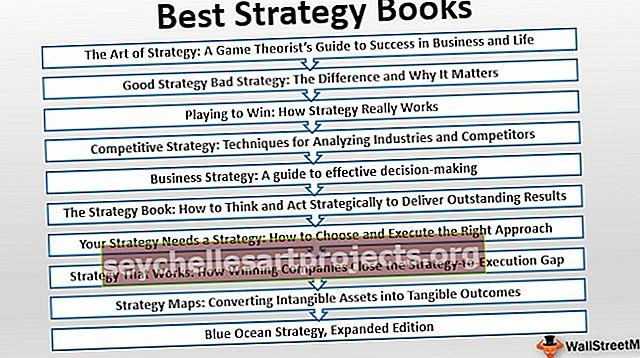Today Gartner highlighted the top 10 strategic technology trends that most organizations will pursue in 2015.
Gartner considers the strategic technical orientation as one of the most important reasons that significantly affect the organization’s work methodology during the next three years, and among its other influencing factors is its high potential to disrupt business, end users, or information technology, or the need for large investments, or exposure to the risk of delay in Adopt orientation. These technologies influence the organization's long-term plans, programs and initiatives.
In this context, David Searley said: “We have identified the top 10 technology trends that organizations cannot ignore during their strategic planning processes. This does not necessarily mean adopting and investing all of these trends at the same level, but organizations must take into account and take appropriate and informed decisions about these trends during the next two years."
Mr. David Searly also noted that the 2015 best trends cover three main themes, namely, the integration of the real and virtual worlds, the deployment of smart solutions everywhere, and the impact of technologies on the digital transformation of business.
Here are the top 10 strategic technology trends for 2015:
computing everywhere
In conjunction with the widespread use of mobile phones, Gartner expects an increased level of focus on meeting the needs of mobile users in various environments, rather than focusing on devices only.
Mr. David Cirley touched on this point by saying: “Phones and wearable devices are now part of the expanding computing environment, which includes consumer electronics and connected displays in work and public environments. Increasingly, the public environment will need to adapt to the demands of mobile phone users. This will raise the level of important and continuing administrative challenges that IT organizations will face, in conjunction with their loss of control over user peripherals. It will also require showing more attention towards user experience design.”
The Internet of things
The unique combination of data flows and services created through the digitization of everything has led to the emergence of four basic usage models, namely management, cash, operation and expansion, and these four basic models can be applied to any of the four Internet applications. Organizations should not limit themselves to thinking that only IoT (assets and machines) has the potential to benefit from these four usage models. For example, a pay-as-you-go model can be applied to assets (such as industrial equipment), services (such as insurance payments based on driving distances), people (such as constantly on the move), places (such as parking lots), and systems (such as cloud services), where businesses of all kinds can Industries make use of these four models.
3D printing
The number of global shipments of 3D printers is expected to rise to 98 percent in 2015, and this percentage of shipments will double by 2016, and shipments of 3D printers will reach its peak within the next three years, with the growth of the relatively low-cost 3D printers market At an accelerated pace, and the expansion of its industrial uses significantly. Industrial, biomedical, and consumer applications will continue to prove that 3D printers are a true, efficient, and economical tool, as they reduce costs by improving designs, simplifying prototyping, and shortening the manufacturing cycle.

Advanced, comprehensive and hidden analytics

Analytics will rise to the top of the list with the rising volume of data being generated by embedded systems, and the analysis of the vast and accumulated amounts of structured and unstructured data inside and outside the organization. In this regard, Mr. David Searley said: “Currently every application needs another application to analyze it, and organizations need to manage the optimal and best ways to categorize the massive amounts of data coming from the Internet of Things, social media, and wearable devices, and then work to provide The right information to the right person at the right time, and analytics will be deep and unobtrusively embedded everywhere.” Big data will continue to be important in facilitating the dissemination of this trend, but the focus should be on the concept of changing the mindset around Big Questions and Answers first, and Big Data second, so the value here lies in the answers, not the data.
Rich systems interacting with the ocean
Extensive, integrated data intelligence and end-to-end analytics will drive the development of systems that interact with and appropriately respond to their surroundings. The security solutions that interact with the ocean are among the early applications that have invested this new ability, which will appear in the rest of the applications soon.
smart machines
Deep analytics will be applied in order to capture the environment that will provide the prerequisites for the world of intelligent machines. This foundational premise is combined with advanced algorithms that allow systems to understand the nature of the surrounding environment, educate themselves, and act on the basis of subjective judgments. Here, we point out that the prototypes of autonomous vehicles, advanced robots, virtual personal assistants, and intelligent advisors, are already in existence, and are evolving very rapidly to usher in a new era of assistive machines. The era of intelligent machines will become the most independent era in the history of information technology. .
Cloud/client computing
Cloud and mobile central computing will continue to fuel the growth of centralized coordination applications, which can be delivered to any device. Commenting on this point, Mr. David Searley said: “The cloud is the new pattern of flexible, scalable, self-serving computing, in which all future internal and external applications will be designed around this new pattern. Although network and bandwidth costs may continue to weigh applications that effectively use client intelligence and storage, but coordination and management processes will be cloud-based.”
In the short term, the focus of the cloud/client will be on syncing content and application state by multiple means, and addressing cross-device applicability. Over time, applications will evolve to support the simultaneous use of multiple devices. Whereas today's second screen phenomenon focuses on coordinating television viewing with the use of a mobile phone. In the future, games and enterprise applications alike will use multiple screens, wearables and other devices to provide an enhanced experience.
Software-defined applications and infrastructures
Streamlined programming of everything from applications to core infrastructures is essential to enabling organizations to provide the flexibility needed to achieve digital business. Software-defined networks, storage solutions, data centers and security solutions have reached maturity. Cloud services have become configurable and configurable with software through API connections, as well as applications, where API connections have increased to access their functions and programming content. To handle the rapidly changing demands of digital businesses and upgrade systems, whether for deployment or downsizing, computing has to move away from static models and adopt interactive models. Rules, models, and code that can be compiled and configured interactively are all essential elements required from the network to the applications.
IT Domain Network
The IT Scale Network is a global computing standard that provides capabilities to large cloud service providers within enterprise IT settings, and more organizations will start thinking and working to build applications and infrastructures similar to giant networks, such as Amazon, Google, and Facebook. The IT domain network cannot be built instantaneously, but it evolves over time as business platforms that embrace new models, improved cloud services, and software-defined methodologies that keep pace with the trend. The first step to reach the IT domain network for many organizations is the development and operation processes, which must be achieved together in a coordinated manner in order to advance the rapid and sustainable development of applications and services.
Risk-based security and self-protection solutions
All roads leading to the digital future pass through security solutions, but in the midst of the world of digital business no security solutions can stand in the way of progress, organizations will increasingly accept the fact that it is not possible to provide a 100 percent secure environment. Once organizations realize this, they can begin to apply more sophisticated tools to assess and mitigate risks. On the technical side, the awareness that excellent firewalls are not enough, and that applications need to take a more active role in the security field, will lead to the emergence of new multifaceted methodologies. Therefore, we need to design applications that interact with security solutions, develop security tests for interactive and traditional applications, implement run-time application self-protection with active interaction with the environment, and enact adaptive access controls, in order to keep pace with the new and dangerous digital world. This will lead to the emergence of new architectures for security solutions that are directly connected to applications. Since firewalls are no longer sufficient, every application needs self-detecting and protection technologies.
